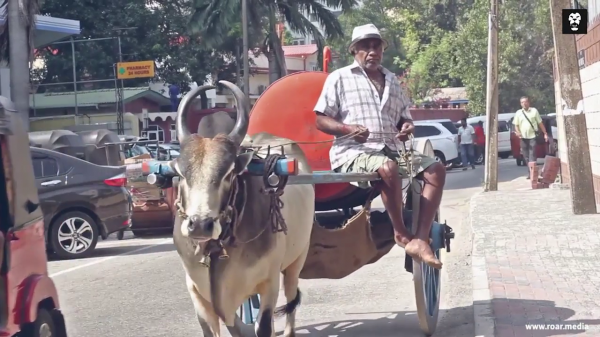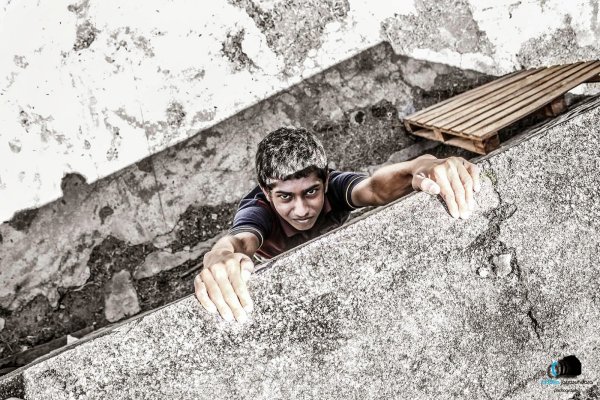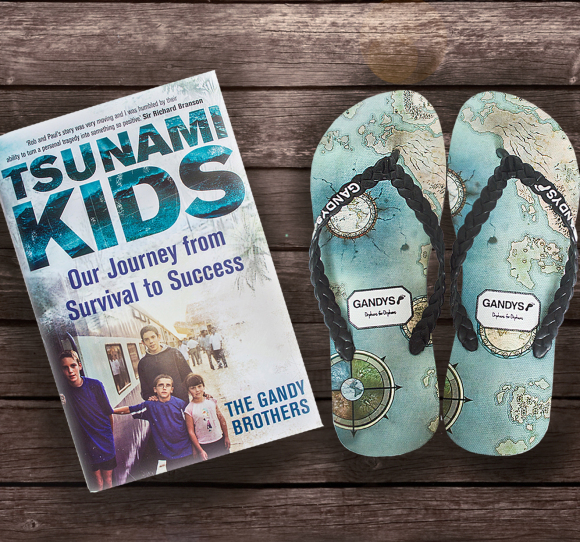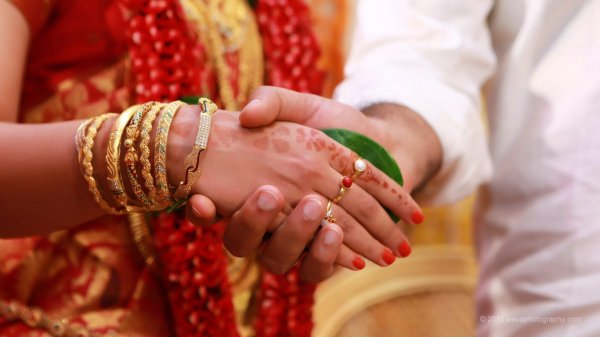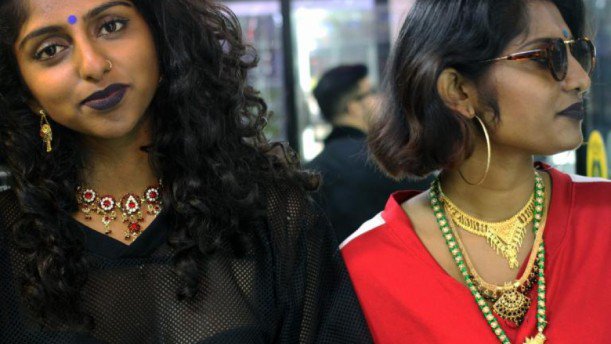
Colourism: The prejudice or discrimination against individuals with a dark skin tone, typically among people of the same ethnic or racial group.
Representation: The action of speaking or acting on behalf of someone or the state of being so represented.
Some weeks ago, the internet was taken by storm when Texas student Pax Jones and Sri Lankan sisters, Mirusha and Yanusha Yogarajah, started an online campaign, #Unfair&Lovely. The campaign sought to take on skin lightening giants such as Fair & Lovely, and challenge the issue of ‘colourism’, especially in South Asian communities, and also among other people of colour. The campaign made waves in the international community and brought the topic of colourism and its impact on the youth of today into conversations everywhere.
 Sri Lankan sisters, Mirusha and Yanusha Yogarajah, are two of the women behind the #Unfair&Lovely campaign. Image credit: Pax Jones
Sri Lankan sisters, Mirusha and Yanusha Yogarajah, are two of the women behind the #Unfair&Lovely campaign. Image credit: Pax Jones
Despite their ad campaigns receiving much criticism, sometimes even being banned, Fair & Lovely still manages to have its message resonate within South Asian culture to a large, and troubling, extent. Corporations, as we all know, aim to give the people what they want. If Fair & Lovely was able to make millions off gambling on the idea that our society associates being light skinned with being beautiful, and that somehow improves your chances at success, then we have our own beliefs and mindsets to blame for contributing to the problem. Even though boycotting the cosmetics giant seems like one possible solution, it is important to understand what societal norms got us here in the first place, and try to make a more lasting change.
#Unfair&Lovely
An observer of the growth of this campaign from its initiation, would notice the lack of social media attention it received in Sri Lanka, a country that is home to many who deal with the social implications of colourism on a regular basis. No major news media outlet has covered the campaign or written on the issue of colourism itself, despite the campaign receiving prominent attention from international media outlets like the BBC.
Reminder that #unfairandlovely is not only an anti skin bleaching campaign. It’s anti colorism.
— Pax Jones (@misspaxjones) April 5, 2016
Colorism is bleaching cream. That’s why #UnfairAndLovely was made. To combat colorism against darker skinned POC who aren’t “fair”.
— Queen Nzinga (@QueenNzinga13) April 11, 2016
#unfairandlovely my dark skin is not meant to be lightened pic.twitter.com/BGf4F0k8DZ
— Biryani Queen™ (@no_chill_nehad) April 11, 2016
The lack of coverage by local media outlets seems like an interesting place to start. It immediately brings to light the realisation that the topic of colourism as a social issue has sometimes been a somewhat taboo topic. Even though casual conversation may seem to use colour as a reference or as banter, we have yet to be comfortable with referencing “colourism” outside of these contexts. The first step to begin a conversation is therefore to rid the topic of its association to being taboo. So how do we achieve this?
A quick look into our history books will suggest evidence of darker skin tones used to emphasise antagonist characters, like in the case of Ravana. A more modern history will point directly to colonialism and the subliminal inferiority complex it built in our people, trickling into every aspect of our lives, even our appearances.
Today, however, colourism is more subtle and more about ludicrous standards of beauty, and a little bit of racism. Its enforcement may sometimes come from an over opinionated aunt at a family gathering, or simply taking a drive around Colombo and looking at all the billboards, flipping through a magazine, or watching local T.V.
Colourism is a global issue. The West is obsessed with being darker, and the East is obsessed with being fairer, but at what cost?
In speaking to several women of all ages about the impact colourism has had on their lives, the importance of discussing this issue has not been clearer. It is saddening to hear stories of young girls who have never participated in sports for the sake of avoiding excess sun exposure, it is troubling to hear the stories of women in their 30’s saying they carry the burden of being treated as ‘less than’ due to their skin colour, all the way into their adult relationships, it is frustrating to hear about salons that would dab on foundation four shades lighter instead of using colours and makeup that compliment and accentuate variations of natural beauty. It is even shocking to learn that there are permanent chemical treatments in the form of injections that have been marketed as skin whitening products by clinics and reputed hospitals around the country.
One such example is glutathione. In reality, this treatment is an antioxidant aimed at reducing illnesses that come as a result of old age or mental and physical illnesses. It has many benefits, such as cancer prevention and improving immunity, to name a few. It also includes a range of vitamins and other beneficial supplements. However, what is concerning is that most treatment centres seem to find it more lucrative to market glutathione as a skin lightening treatment, as opposed to its other uses. The said skin lightening is in fact a result of a side effect of the antioxidant, which destroys our body’s natural sun protectant ‒ melanin ‒ which is responsible for darker skin tones. Feeling the necessity to set aside other benefits of glutathione and focus on skin lightening as it’s main selling point instead of listing it as a side effect, and deluding society into thinking that destroying your melanin production through injections and laser treatments for the sake of looking fairer is a safe approach, is a sobering byproduct of our attitudes towards colour. It is also disturbing to note how colour is addressed when discussing skin lightening and associated ‘treatments’. In this segment of a local television show, for instance, the presenter addresses colour in a way that may be damaging to anyone who is impressionable and already concerned with their colour.
In contrast, there are also those who completely embrace their darker skin colour. Speaking to a few such women on their experiences, it was learnt that there are other underlying repercussions of colourism. For instance, one specific case suggested that too many people implied that being Sinhalese, dark skinned, and having a nose piercing results in you looking Tamil (in a pretty derogatory manner). Other respondents also recollected instances where they were referred to as “looking Tamil” (regardless of facial accessories), further emphasising the need to start the difficult conversation about colourism and racism today.
For those who doubt if colour is even an issue in Sri Lanka, the reasons above should be an indicator that it is. Given other hardships and discrimination women have to deal with on a regular basis, particularly in traditional societies, one’s outward appearance and skin tone should definitely not be an added issue.
How Representation Is Vital To Change
Modern standards of beauty are fuelled by representation, but herein could also lie the cure. Representation is a powerful tool for change, and is often underestimated. Being able to identify yourself with someone else and be advocated for, has given rise to empowerment across various social issues and platforms, globally. So taking cues from such initiatives, one could begin to value the concept.
To begin with, there is a gross underrepresentation of darker skinned individuals in popular culture in Sri Lanka. This is quite evident when flipping through ads in any popular magazine. Even in instances where these individuals are of a darker skin tone, there is often extensive photoshopping and editing carried out to “fix” this, which is when the dangers of the issue of colourism come into play yet again.
A major fashion show held recently in Colombo was an eye-opening example of the state of underrepresentation of darker skinned women in today’s culture, and the outdated colonial values that still seem to be alarmingly prevalent even in a younger, hip Colombo. Multiple credible sources who participated in the event stated that showstopper roles were reserved for “white skinned girls” (their very words). They also commented on the lack of darker toned models being encouraged to participate in the event. It is, in some ways, a throwback to colonialism, adding to modern day colourism.
The underlying preference for prioritising fairer skin tones within the industry ‒ be it for commercials or the catwalk ‒ is a serious issue, because what is portrayed is in some way or the other influencing the standards of beauty within a country. Its negative implications are witnessed in the smaller number of darker skinned models auditioning for roles and opportunities in the first place (the aforementioned show was one such instance), which in return shows the extent to which this stigmatisation has reached.
Making a reference to the fashion industry with regard to an issue like colourism might seem shallow, but its influence has been tested time and time again. Changes for the better have been known to make a significant impact on self confidence, and a positive body image for young people everywhere.
It would do at this point to give due credit to Barefoot, one of the few brands that opted to take an unconventional and bold route and use darker skinned models in their campaigns.
 Sri Lanka’s Barefoot advertisements are among the few that portray dark skinned models. Image courtesy govisitsrilanka.com
Sri Lanka’s Barefoot advertisements are among the few that portray dark skinned models. Image courtesy govisitsrilanka.com
There is a dire need for more campaigns like this, and a need for darker tones to be represented in media and popular culture. There is a need to build resemblance, so that a large section of our population can relate to what is being represented, and begin to appreciate and embrace their identity more. Only if there is this kind of diversity in representation can we break the associated taboo, and continue the conversation the Yogarajah sisters began with their #Unfair&Lovely campaign, here in Sri Lanka too. If being fair is what mainstream beauty is all about today, it’s high time we demanded a change in representation.
Navodinee is a Youth Correspondent to the UNDP in Sri Lanka, and has been actively involved in youth empowerment. Colourism is an issue she is passionate about bringing awareness to.
Cover Image credit: Pax Jones




